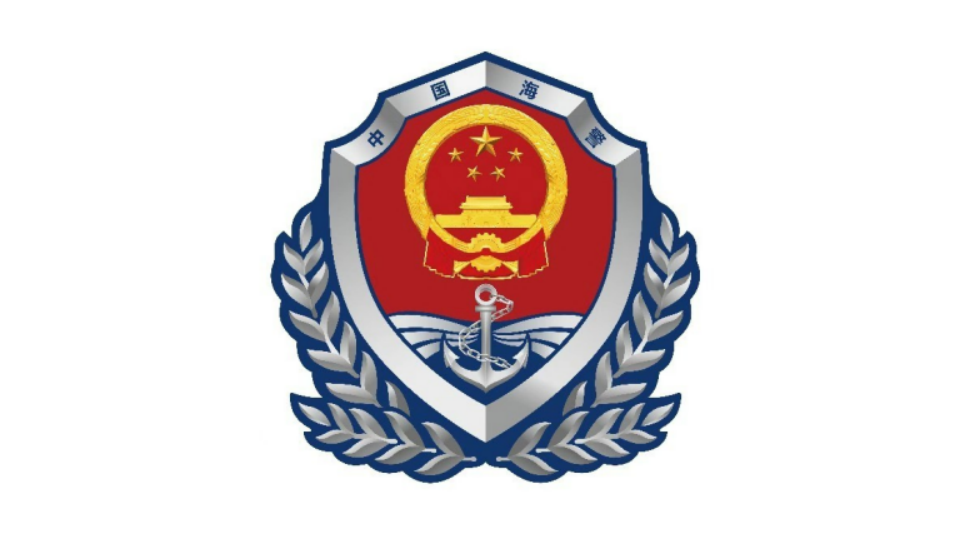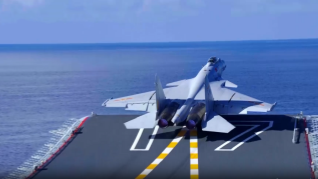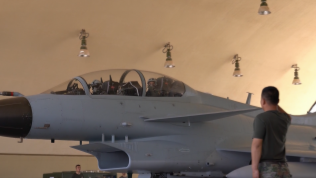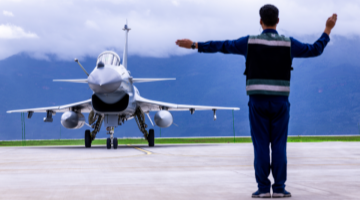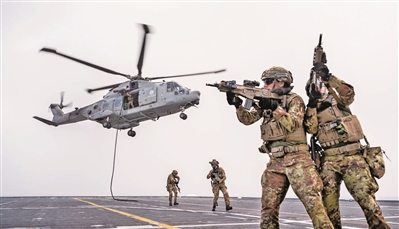
By Lin Yuan
Thirty NATO ambassadors signed the accession protocols for Finland and Sweden join the transatlantic military alliance on July 5. This is the latest development in the agreement reached by leaders of NATO member states at the Madrid Summit last week.
The moves of the NATO summit including a new version of the strategic document, accelerated pace of its eastward expansion, and the attraction of a few Asia-Pacific countries aroused the attention and vigilance of many parties. Especially before and after the summit, relevant countries have expressed that they will increase military expenditure and speed up weapons procurement. This has exposed the strategic thinking of seeking hegemony by force.
NATO accelerates armament construction internally
The NATO summit decided to expand the NATO Response Force (NRF) from about 40,000 people at present to more than 300,000 people. NATO Secretary General Jens Stoltenberg called it "the biggest overhaul of our collective deterrence and defense since the Cold War." At the same time, US President Joe Biden announced that the US will strengthen its military deployment in Europe, including establishing a permanent military presence in Poland.
NATO member states have shown a trend of "competing against each other" in terms of military spending. German Chancellor Olaf Scholz said on June 28 that Germany's average annual military expenditure will reach 70 billion to 80 billion eurosin the next few years, and Germany will become the country with the largest defense expenditure in Europe. On June 30, British Prime Minister Boris Johnson said that by 2030, the UK will increase military spending from the current 2.3 percent of GDP to 2.5 percent. Spain, which has the lowest military spending as a percentage of GDP, also announced it would increase its military spending. According to Spanish media reports, the country is expected to increase military spending to 2 percent of GDP by 2029.
In terms of armament construction, German Chancellor Olaf Scholz said that Germany will strengthen the military presence in NATO's eastern flank and the Baltic coastal areas to help NATO's Eastern European member states. Greek Prime Minister Kyriakos Mitsotakis said Greece has sent a written document to the US to formally request the purchase of 20 F-35 fighter jets, with deliveries expected to begin in 2027-2028. Turkey is also making progress in the procurement of fighter jets. After Turkey said it agreed with Sweden and Finland to join NATO, Biden publicly expressed support for Turkey's purchase of US F-16 fighter jets and said he was confident that the deal would be approved by US Congress.
NATO strengthens external deterrence and pressure
Under the "brainwashing" and win-over of the US, NATO is obsessed with Cold War thinking and zero-sum games, and its military tentacles are constantly expanding. On June 29, NATO member states approved the NATO 2022 Strategic Concept, opened the door to expansion to Sweden, Finland, Ukraine and Georgia, and listed Russia as the "most significant and immediate threat".
Judging from the development history of NATO for more than 70 years, it has long abandoned the original intention of its founding during the Cold War. Although NATO has publicly stated many times that its positioning as a regional alliance has not changed, it does not seek geographical breakthroughs, nor does it seek to expand its membership in other regions. However, this year's NATO summit has invited Japan, the ROK, Australia, New Zealand, and other Asia-Pacific countries. It is the first time in the history of NATO.
What is even more worrying is that the US has firmly controlled the leadership of NATO since its establishment. The US has turned the so-called defensive organization into an important tool for controlling European allies, suppressing strategic competitors, and promoting American values. It is foreseeable that in the future, NATO will not rule out the use of extreme means such as launching wars to serve the strategic interests of the West and maintain the US global hegemony.






